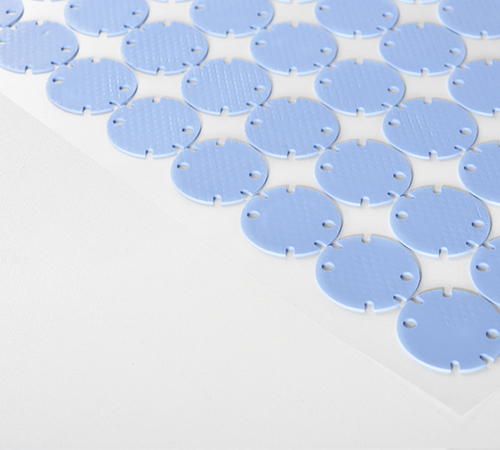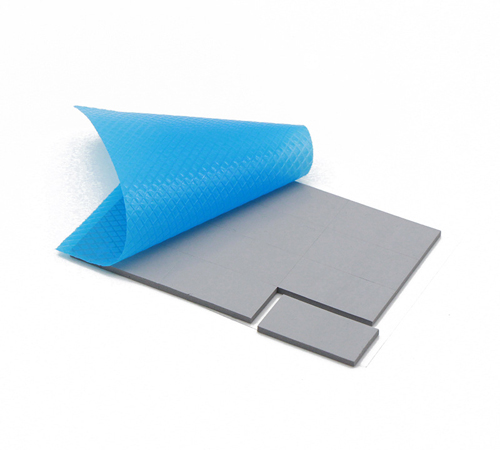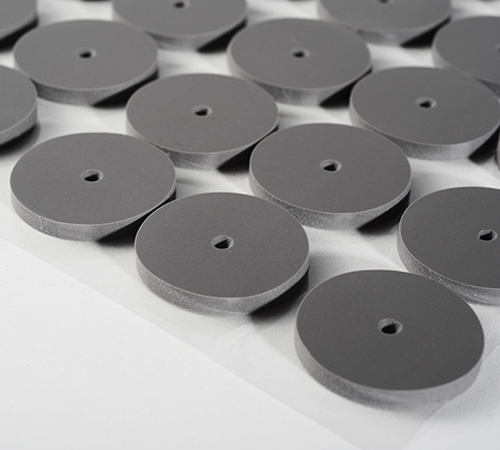Thermal silicone pads are unsung heroes in electronic product cooling, with their performance directly impacting device stability and lifespan. However, many users encounter the issue of these pads hardening over time, which can not only reduce cooling efficiency but also potentially damage components. So, what exactly causes these soft "thermal guardians" to stiffen? This article will delve into the intrinsic mechanisms and extrinsic factors behind thermal silicone pad hardening, providing professional advice on prevention.
I. The "Hardening" Mystery of Thermal Silicone Pads: An Interplay of Materials and Manufacturing
Thermal silicone pads maintain their flexibility and conductivity due to their unique material composition and manufacturing process. They typically consist of siloxane polymers (silicone rubber), thermally conductive fillers (such as aluminum oxide, boron nitride), and various additives, all mixed and cured. Hardening, in essence, is a manifestation of changes in the material's structure.
1. Core Reason: Changes in Polymer Cross-linking Density
The primary reason for silicone pad hardening is a change in the cross-linking density of its internal siloxane polymers. Under normal use, the polymer chains within the silicone pad are interconnected through specific cross-linked structures, forming a soft and stable network. When this cross-linking structure undergoes excessive cross-linking, the connections between the polymer chains become tighter and more rigid, causing the material to lose elasticity and become hard.
2. Influencing Factors: Incomplete Curing and Secondary Curing
Incomplete Curing: During the manufacturing process of thermal silicone pads, if the curing reaction is insufficient, the product may not have fully reached its optimal cross-linked state when it leaves the factory. These "under-cured" silicone pads, over time and with exposure to temperature, will continue to undergo residual cross-linking reactions, leading to their gradual hardening.
Secondary Curing: Even fully cured thermal silicone pads can experience secondary curing when exposed to high temperatures for prolonged periods. High temperatures accelerate the decomposition and recombination of siloxane polymer chains, forming more cross-links, which results in the silicone pad becoming harder and more brittle.
II. Environment and Application: External Drivers of "Aging"
Beyond the material's inherent factors, external environmental and application conditions are significant contributors to thermal silicone pad hardening.
1. High Temperature: The Invisible "Catalyst"
High temperature is the number one culprit behind thermal silicone pad hardening. Electronic devices generate considerable heat during operation, and if the cooling design is inadequate or the device runs overloaded for extended periods, the thermal silicone pad will be continuously exposed to temperatures exceeding its design limits. High temperatures not only accelerate the secondary curing reactions mentioned above but also promote the volatilization of certain low-molecular-weight substances within the material, causing the material structure to loosen and further accelerating the hardening process.
2. Pressure: An Overlooked Physical Effect
In practical applications, thermal silicone pads typically experience a certain amount of installation pressure to ensure close contact with the heat source and heatsink, thereby minimizing thermal resistance. However, if the applied pressure is excessive or uneven, it can damage the internal structure of the silicone pad, alter the arrangement of polymer chains, and accelerate its hardening. Furthermore, prolonged operation under high pressure may squeeze out silicone oil and other additives, further affecting its flexibility.
3. Chemical Corrosion and Contamination: The Invisible "Killers"
Although silicone materials are chemically stable, thermal silicone pads can still be susceptible to chemical attack in certain harsh environments. For instance, corrosive gases, solvents, or volatile organic compounds (VOCs) generated within the device can react with the silicone pad, disrupting its molecular structure, leading to performance degradation and accelerated hardening. Additionally, long-term accumulation of dust, moisture, and other contaminants can also impair its cooling efficiency and lifespan.
III. Prevention and Selection: How to Slow Down the "Hardening" Process?
Understanding the reasons behind thermal silicone pad hardening allows us to address the issue effectively, implementing preventive measures and making smarter selection decisions.
1. Rational Cooling Design: Controlling Temperature at the Source
Ensure that the device's cooling system is well-designed, selecting appropriate heatsinks and fans, so that the thermal silicone pad operates consistently within its recommended temperature range. Avoiding prolonged extreme operating conditions for the device and regularly cleaning heatsinks to maintain good ventilation are key to lowering the silicone pad's operating temperature.
2. Precise Selection: Choosing High-Quality Products
When selecting thermal silicone pads, always pay attention to parameters such as their temperature resistance rating, thermal conductivity, hardness, and compression characteristics. Choose products from reputable brands with quality assurance; these typically use superior silicone base materials and fillers, employ more complete curing processes, and exhibit better anti-aging and high-temperature resistance. For example, some high-end thermal silicone pads include special anti-aging agents to slow down performance degradation.
3. Standardized Installation: Avoiding Excessive Pressure
During installation of thermal silicone pads, strictly follow the product's instructions, applying uniform and appropriate pressure. Avoid overtightening screws or causing the silicone pad to wrinkle or deform during installation. Correct installation methods maximize the thermal conductivity of the silicone pad while protecting its structural integrity.
4. Environmental Control: Away from Corrosion and Contamination
In device design and use, try to prevent thermal silicone pads from coming into contact with corrosive chemicals. For devices that need to operate in harsh environments, consider using thermal materials with higher protection ratings or special surface treatments. Additionally, keep the interior of the device clean and dry, reducing dust and moisture accumulation.
Conclusion
The hardening of thermal silicone pads is not inevitable; it is typically the result of multiple factors acting in concert. By understanding the scientific principles behind it and implementing targeted preventive measures based on actual application scenarios, we can effectively extend the lifespan of thermal silicone pads, ensuring stable and efficient operation of electronic devices. Next time you notice your thermal silicone pad "changing," you might find the answer in this article and take the correct course of action.
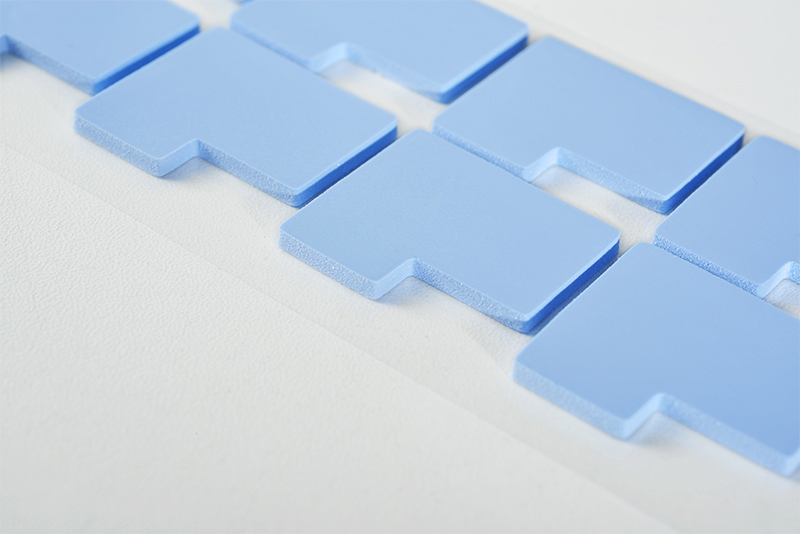
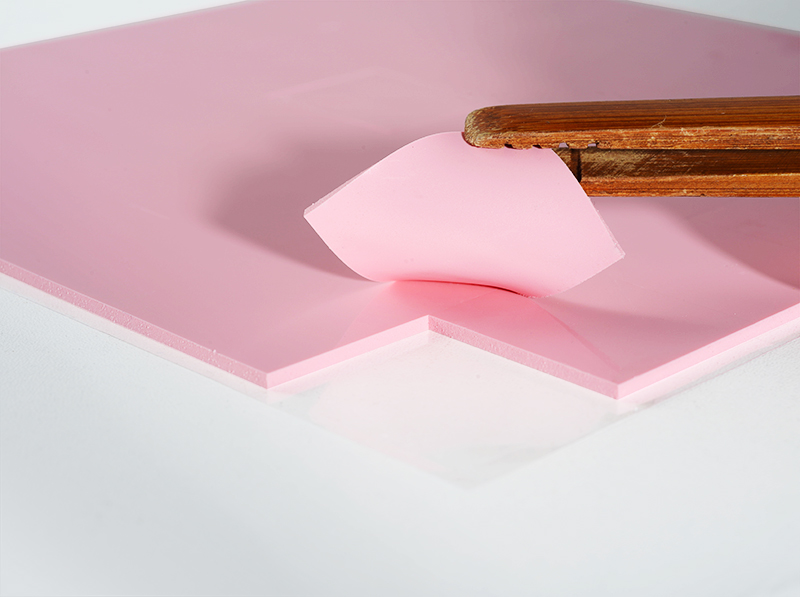
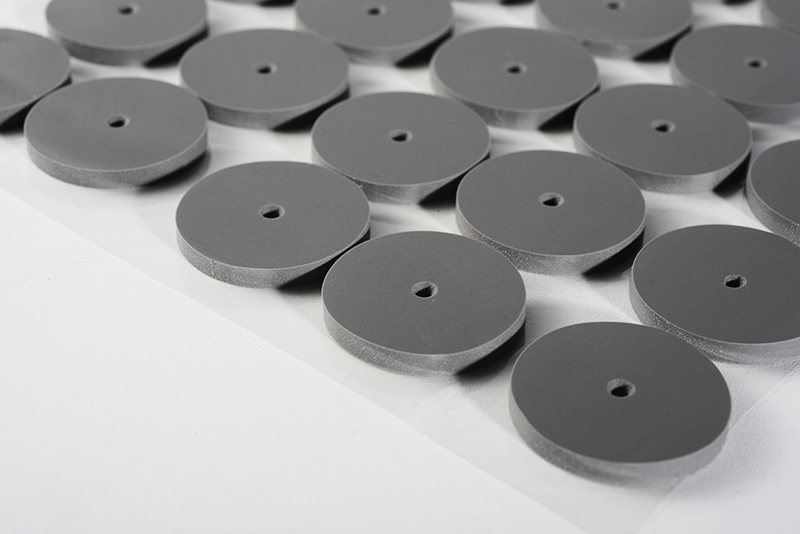
 CN >
CN >
